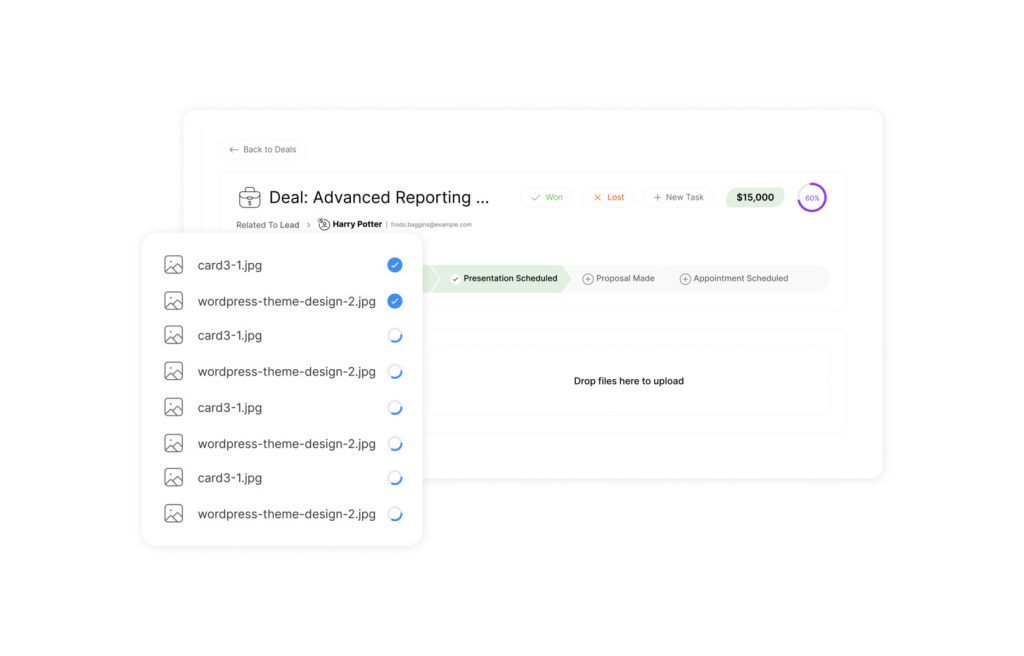Efficient File Attachment Management: A How-To Guide

In today’s digital landscape, file attachments are a crucial part of digital communication and information management. Organizations face numerous challenges when handling attachments across various platforms, including size limitations, security concerns, and organizational issues.
This comprehensive guide addresses the fundamental aspects of managing file attachments efficiently, from understanding their importance to implementing best practices that enhance data security and improve workflow efficiency.
By exploring practical solutions for common attachment challenges across email systems and content management systems, businesses can streamline their digital workflow and ensure critical information remains accessible when needed.
Key Takeaways
- Efficiently managing file attachments enhances data security and improves workflow efficiency.
- Practical solutions can be implemented to address common attachment challenges.
- Streamlining digital workflow ensures critical information remains accessible.
- Best practices for file attachment management can be applied across various platforms.
- Enhancing data security is crucial for protecting sensitive information.
Understanding File Attachments and Their Role

File attachments serve as a fundamental component of digital communication, allowing users to associate relevant files with specific records or features. They enable the sharing of documents, images, and other file types across various platforms, enhancing collaboration and information accessibility.
What Are File Attachments?
File attachments are files stored in a geodatabase feature class attachment table and linked to individual features, allowing users to associate non-geographic data with their geographic information. This linkage facilitates a more comprehensive understanding of the data.
Common File Attachment Contexts
Attachments are used in various contexts, including email communications, customer relationship management systems, content management systems, and specialized software applications. In email systems like Outlook, attachments enable sending files alongside messages.
Benefits of Efficient File Attachment Management
Efficient file attachment management offers several benefits, including improved information accessibility, enhanced collaboration, and better version control. Organizations that implement structured attachment protocols experience reduced storage costs and improved security compliance.
| Benefits | Description |
|---|---|
| Improved Information Accessibility | Efficient management allows for quick access to relevant files and data. |
| Enhanced Collaboration | File attachments facilitate the sharing of information across teams and departments. |
| Better Version Control | Structured protocols ensure that the most current version of a file is used. |
Setting Up Effective File Attachments Systems

Effective file attachment management starts with proper configuration and setup. To achieve this, several key steps must be taken to ensure that the file attachment system is both functional and secure.
Enabling and Configuring File Attachments
To enable file attachments, specific configuration steps are required within the application or platform being used. For instance, running the geoprocessing tool in the geoprocessing pane for the source feature class is necessary to activate file attachment functionality. This step is crucial for allowing the storage of file attachments, which is not enabled by default.
File Type Restrictions and Size Limitations
Implementing appropriate file type restrictions and size limitations is vital for maintaining system security and performance. By default, systems like Contact Form 7 apply certain restrictions, such as accepting file types like audio/*|video/*|image/* and limiting file size to 1mb. However, these default settings often require adjustment to align with organizational needs and technical infrastructure.
Storage Locations and Organization
The decision on storage locations significantly impacts system performance. Options range from local storage to cloud-based solutions, depending on accessibility and security requirements. Organizing attachments in a logical hierarchy that mirrors business processes is also essential for intuitive retrieval and efficient management.
| Configuration Aspect | Default Setting | Customizable |
|---|---|---|
| File Types | audio/*|video/*|image/* | Yes |
| File Size Limit | 1mb | Yes |
| Storage Location | wp-content/uploads/wpcf7_uploads | Yes |
Best Practices for Managing File Attachments
To maximize the benefits of file attachments, businesses must adopt best practices that streamline their workflow and enhance productivity. Effective management of file attachments is crucial for maintaining organizational integrity and ensuring that stakeholders have access to the most current information.
Adding and Updating Attachments
When adding attachments, it’s essential to understand the specific workflow of your system, whether it’s through an Attachments tab, toolbar buttons, or drag-and-drop functionality. Maintaining version control is critical when updating attachments to prevent confusion and ensure that all stakeholders access the most current information.
Opening and Saving Attachments Securely
Organizations should implement security best practices for opening attachments, including scanning for malware and verifying sender authenticity. When saving attachments, using standardized naming conventions and designated storage locations helps maintain organizational integrity.
Removing and Managing Outdated Attachments
Regular maintenance of attachment libraries through systematic removal of outdated files prevents storage bloat and reduces confusion from obsolete information. Implementing search functionality that indexes attachment contents enhances findability and makes information retrieval more efficient across the organization.
By adopting these best practices, businesses can significantly improve their file attachment management, leading to enhanced productivity and better decision-making.
Conclusion: Streamlining Your File Attachments Workflow
Optimizing file attachment systems is key to improving workflow efficiency. Managing file attachments efficiently is a key component of modern digital workflows, directly impacting productivity and information accessibility.
Organizations can expect significant improvements in attachment handling efficiency, security compliance, and user satisfaction by implementing the strategies outlined in this guide. Continuous evaluation of attachment systems, including regular feedback collection from users, is crucial for identifying areas for enhancement.
As technology evolves, attachment management systems should adapt to handle increasing file sizes and emerging file formats. Implementing automated attachment management tools can streamline routine tasks such as archiving outdated files and enforcing naming conventions.
By treating attachments as valuable organizational assets, businesses can establish a foundation for more robust information management. Effective file attachment management is an ongoing process requiring periodic review and adjustment to maintain optimal performance.

